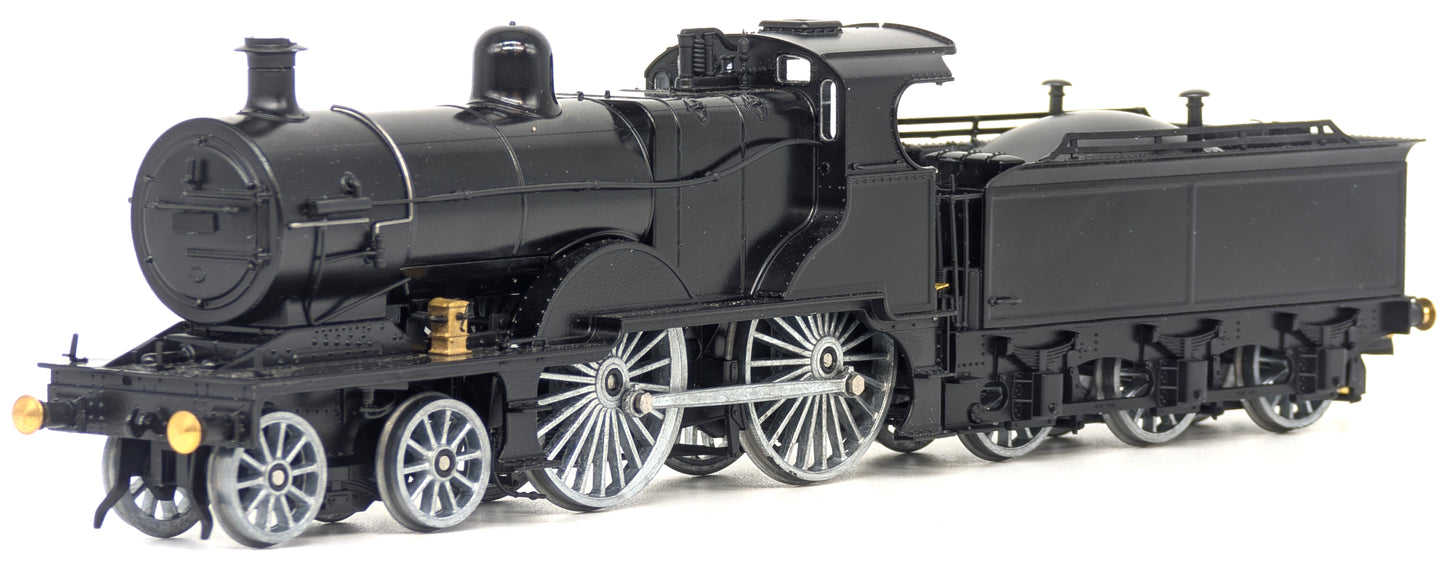Rapido Trains UK 974005 Midland Railway 483 Class 4-4-0 LMS Crimson No.482 (Small Letters) Steam Locomotive



Product Details
| SKU | RAP-974005 |
|---|---|
| Vendor | Rapido Trains UK |
| Categories | Best selling products Era 3 HO-OO Locomotives New products OO Gauge Locomotives OO Gauge scale OO Gauge Steam Locomotives Pre-Orders Rapido Trains UK Rapido Trains UK Midland Railway 483 Class 4-4-0 Steam Locomotives |
| Scale | OO Gauge |
| Share | |
| Features |
|
Product Description
Expected Delivery Q3 2026 (Subject to Change at Manufacturer's Discretion).
It was only a matter of time before we decided to tackle one of the pre-grouping eras' most popular railways—the unquestionably beautiful and regal livery of the Midland Railway.
As the turn of the last century approached, the Midland Railway wanted to improve services and modernise, whilst remaining competitive and comfortable for passengers. With a variety of routes between London and the North, it was important for them to be mindful of this fierce competition.
However, with profits in mind, and the ever-growing weight and size of express locos being rolled out by their competitors, the Midland Railway wanted a way to achieve this goal without the costly expenditure of replacing or upgrading bridges that imposed restrictions on loco weights.
Thankfully, this conveniently coincided with the Midland experimenting with loco wheel arrangements throughout the late 1800s, led by designer Samuel W. Johnson. By 1900 the 4-4-0 arrangement had won the arms race, beating the iconic ‘Singles’, as such, a multitude of 4-4-0 locos were built, these were designated as Class 2’s.
With further developments in boiler designs and the advent of superheaters, loco technology had moved on quite a bit through the early 1900s, and with the aforementioned profits on the minds of the Midland Railways leadership it was decided that the Class 2s would receive an upgrade in the way of a ‘rebuild’.
Utilising a variety of parts from the existing Class 2s, the ‘rebuilds’ received new frames, new larger driving wheels, new cylinders, and the newly developed ‘Belpaire’ G7S boiler, which were also fitted with Schmidt's superheaters. These rebuilds were assigned the class number 483. Though with that many new parts, it would be fair to say that the term rebuild could justifiably be put in inverted commas.
The first of these rebuilds rolled out of Derby Works in Feb 1912 as No.494. Further batches were then completed by the Midland in 1913, 1914, and 1922, the LMS then finished the job in 1924 having inherited the fleet as part of the grouping of the railways in the previous year. By this time, they had been assigned the power classification 2P.
The design for the 483 Class would go on to inspire a plethora of well- known LMS locos, such as the famous ‘Compounds’, becoming a key link between the evolving designs of the early pre-grouping era, and the later designs of the Big Four.
Proving to live up to the task at hand, the Midland even assigned 483 No.502 to Royal Train duties, keeping it in immaculate condition at all times. Conversely, the 483s were also used on freight duties, making them an ideal all-rounder for the fleet.
With the joint acquisition of the Somerset and Dorset Joint Railway by the Midland and LNWR in 1875, it was somewhat inevitable that the Midland would trial the 483 Class on the undulating and challenging terrain of the line. In 1913 two 483s ran trials on the S&DJR, and having proved their worth 5 locos were ‘rebuilt’ to bolster the S&DJR fleet.
Both the Midland and S&DJR 483s would work stoically alongside their 2P classmates under LMS ownership, right through the grouping era, and into the nationalisation of Britain's railways. 165 483s survived into BR ownership, which included the 5 S&DJR locos. Sadly, none of the class survived into preservation, with their withdrawal and scrapping happening throughout the 1950s. An unceremonious end for such a hard-working engine.
The Rapido Trains UK highly-detailed rendition of the 483 Class will be available in liveries that cover the loco's lengthy history. These include several in the regal Crimson of the Midland Railway, a striking S&DJR blue example and a nice selection of LMS and BR liveries too.
Detail variations include representations of locos from earlier and later rebuild batches, as well as the alterations, additions, and subtractions of parts throughout their lives, including superheater dampers, chimneys, tablet catchers, domes, safety valves, rivet patterns, tender toolboxes, bogie brakes, exhaust injector and more.
You can look forward to a smooth-running mechanism, a factory-installed speaker, NEM Coupler pockets, an ESU 21-pin decoder socket, cosmetic inside motion, and firebox flicker with a dynamic fire draw effect.


